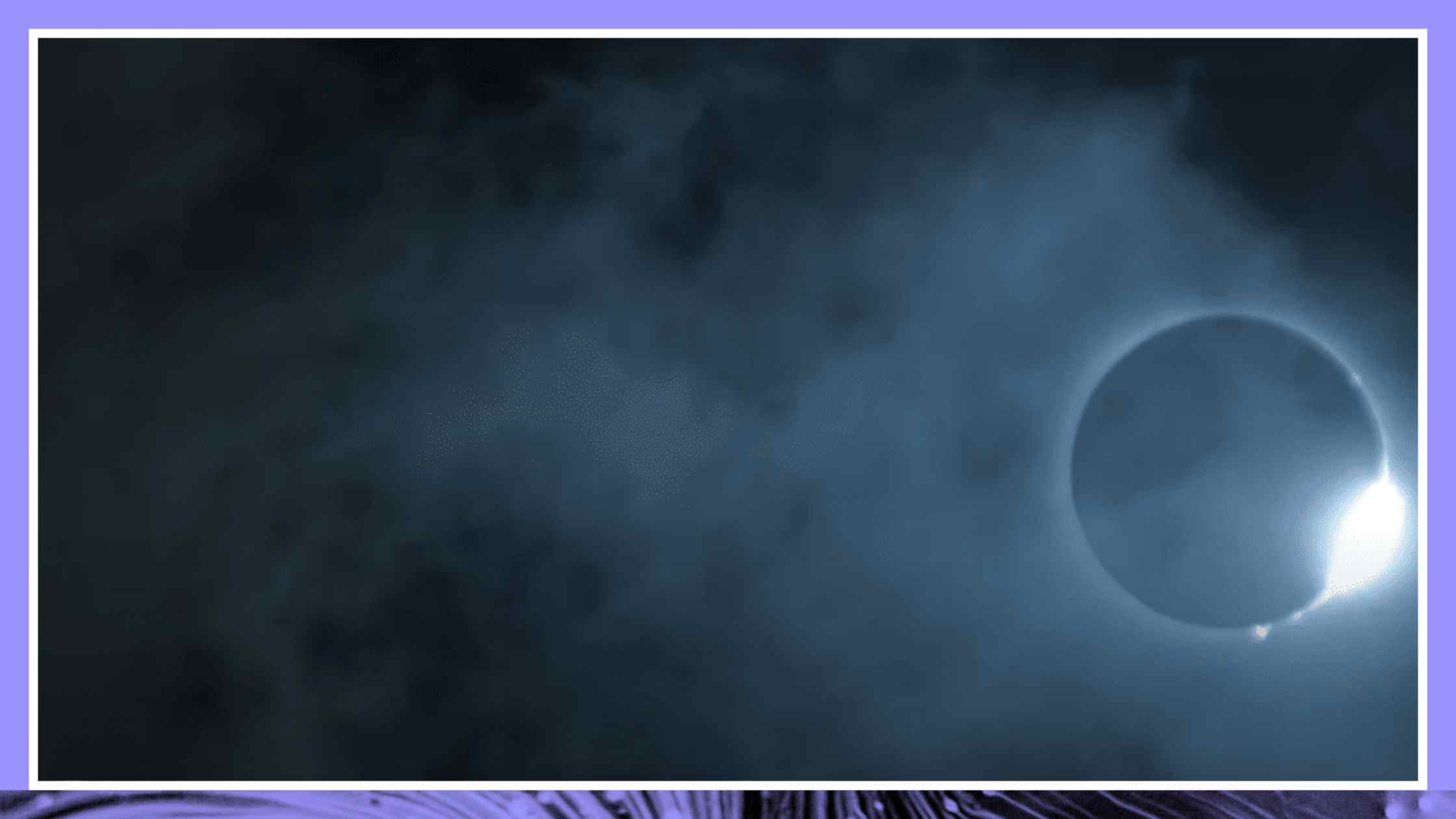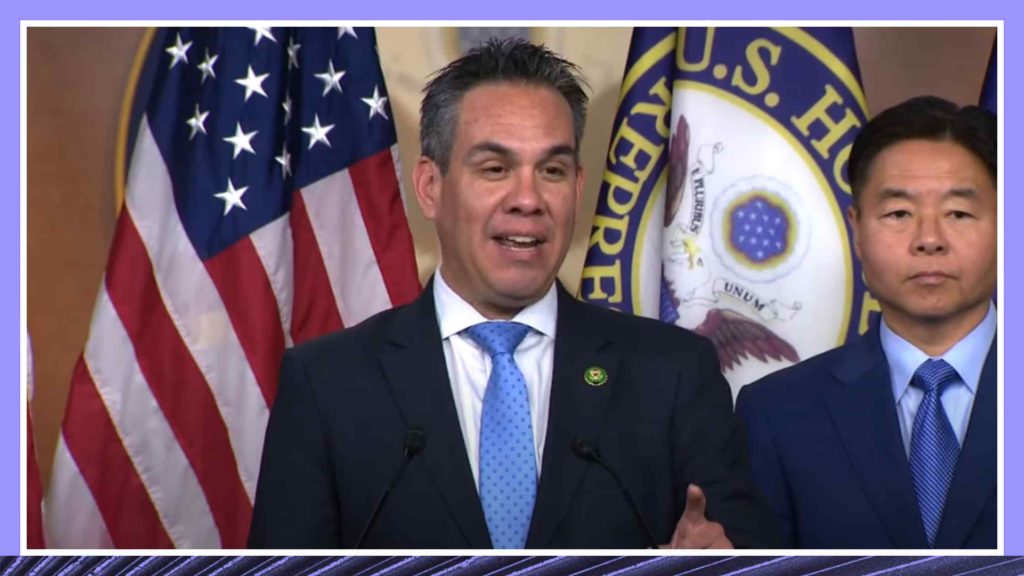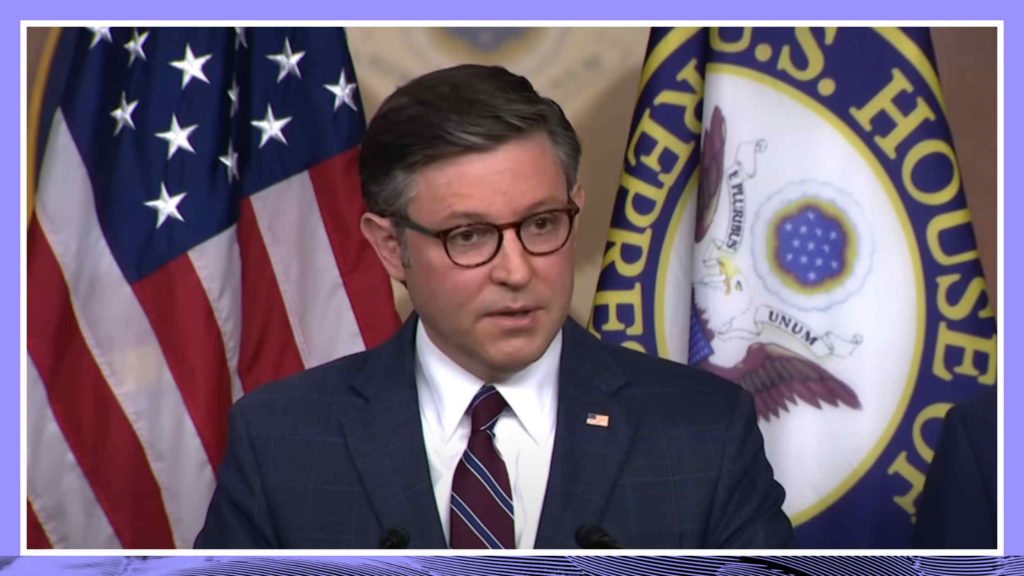Apr 9, 2024
Millions of People Witness Rare Total Solar Eclipse

Millions of people on Monday watched a rare total eclipse cut across the U.S., Mexico and Canada. Read the transcript here.
Millions of Americans took a break today to step outside and check out the rare total eclipse that cut across the US, Mexico and Canada. Where skies were clear, people could witness the moon blocking out the sun almost entirely today, plunging some cities and towns into darkness for several minutes. In many other places, it was a chance to look at a partial eclipse, with the right glasses, of course. Our science correspondent Miles O’Brien spent his day in Dallas.
Miles O’Brien (00:31):
It was a Texas-sized eclipse-viewing party. Despite a gray forecast, thousands came to the Cotton Bowl in Dallas to witness the sun, moon, and Earth perform a cosmic line dance. The gawkers were joined by some astronomical experts, docents for a day this crowd will long remember. Solar physicist Carrie Black is the National Science Foundation Program Officer for the National Solar Observatory.
Carrie Black (00:58):
What I’m really hoping the kids and adults take away alike is the excitement of the experience.
Miles O’Brien (01:05):
Space physicist Joe Westlake is head of Heliophysics for NASA.
Joe Westlake (01:10):
I feel like these kinds of things show you that the celestial bodies are real, that the moon is a thing that changes, that has differences, that the sun is something that is active, that’s happening. And I feel like our connection as humans to that celestial event is amazing.
Miles O’Brien (01:26):
More than 30 million Americans live beneath the path of the total eclipse. Millions more migrated to the diagonal swath, the roads to get there snarled by heavy traffic. Some enthusiasts were out before dawn at the crest of Niagara Falls, vying for a front-row seat.
Allen Jiang (01:45):
This is the closest eclipse to where we live until 2079, if we’re even alive by then. So this is truly a once-in-a-lifetime opportunity.
Trinigy Gebhardt (01:55):
I think it’s almost part of human nature to sort of see these things and become curious about the unknown.
Miles O’Brien (02:01):
For much of the day, spectators waited anxiously on the misty overlooks for clouds to clear. But others, 309 to be exact, came dressed to brighten up the occasion. The city broke the Guinness World Record today for the most people dressed as the main attraction: the sun. And as afternoon finally rolled around, the cloudy skies parted just in time for the eclipse to usher in some daytime stargazing.
(02:32)
Watch parties drew in massive crowds, to the Indy 500 racetrack, to Idabel, Oklahoma where viewers basked in the sun with certified and improvised eyewear. Sunlight disappeared and kids jumped for joy, and even in the nation’s capital, hundreds of miles away from the moon’s shadow, but close enough to catch a glimpse of it skirting over 87% of the sun.
(03:00)
A solar eclipse occurs thanks to a sublime coincidence. Our moon is 400 times smaller than our sun, but also 400 times closer. So when it passes between, voila, a spectacular optical illusion. The three bodies line up just right between two and five times a year. It doesn’t happen every month because the moon’s orbit is tilted five degrees relative to Earth. A total solar eclipse occurs on any given spot on the planet once every 375 years.
Joe Westlake (03:33):
This is a unique event and it spurs all sorts of lines of inquiry in the youth. And I hope that they take that home, they ask their own questions, they find their own results.
Miles O’Brien (03:44):
The Cotton Bowl sits right in the so-called path of totality where the clouds parted and the moon completely covered the sun for about four minutes. They geared up under watchful eyes, protecting the lenses they brought and the ones they were born with.
(03:59)
What would happen in space was an ironclad certainty, but the Earth’s atmosphere served up a wild card of unpredictability. Here in Dallas, the morning overcast petered out at a patch of blue broke through just as the day turned to night and back again, in four minutes’ time, a lucky turn for these young people who enjoyed the coolest science class ever.
(04:24)
What’d you learn the most?
Speaker 8 (04:26):
I learned that the world, nature and things, can be tied in into learning.
Speaker 9 (04:33):
I got to see the solar eclipse, and it’s not going to happen for another 100 years.
Miles O’Brien (04:38):
Why do you think eclipses are so exciting, especially to young people?
Ariane Phillips (04:42):
Because it’s something we don’t see every day. We don’t get to see it every day. It’s something that’s rare. So of course it’s exciting when we get to see it. And so I don’t think any of them saw it in 2017, so they’re really excited to be able to see it.
Miles O’Brien (04:59):
On this eclipse day, the country did seem upside down. Normally sunny Texas was cloudy while in the northeast, April showers took a break. The clouds were pushed aside by high pressure, and so the big light show got better as it moved across the Lower 48.
(05:16)
For NASA, clouds were not a worry. As it did during the last American eclipse in 2017, the agency launched a pair of high-flying research platforms, 50,000-foot jet sorties to the edge of our atmosphere to learn more about the edge of the sun’s atmosphere. It’s called the corona, or crown. Hotter than the sun, yet also a million times dimmer, the corona is usually cloaked in brightness. It sends a steady stream of particles toward Earth causing beautiful auroras, but they also can interfere with radio communications, GPS signals, and satellite operations. Scientists also hope to learn more about how the sun affects the Earth’s atmosphere. The space agency launched three sounding rockets from Wallops Island, Virginia before, during, and after the eclipse, to measure how the upper atmosphere changes when sunlight momentarily dims during the 90% eclipse there.
(06:18)
Wherever people saw the eclipse, there was an atmosphere of excitement. For my money, this was better than a championship-winning touchdown in overtime here at the Cotton Bowl. But Amna, I’m not from Texas.
Amna Nawaz (06:36):
Miles O’Brien. Miles, there was a lot of talk about clouds or cloud cover potentially obstructing some of the view and the big show even where you are. But how did it actually turn out? Tell us about what you saw.
Miles O’Brien (06:49):
All morning long, here we were with thousands of young people all enjoying an awesome field trip, and it was kind of grim. And we were thinking, “Well, at least we have the excitement of them being here. It’ll get dark.” And then we had a patch and it was just at the right place and at the right time, and it was just a thrill. And I think the fact that we didn’t know if we were going to see it enhanced the whole enjoyment of it. It was fabulous.
Amna Nawaz (07:17):
So depending on where people were, because we know people traveled all over the country to see this, who do you think had the best view today?
Miles O’Brien (07:23):
The weather got better as it went to the Northeast today, and we did have some touch-and-go clouds. But I’ve seen an eclipse back in 2017 on perfectly clear day. Part of what I realized today is the company you keep as you watch it. And being here in this stadium filled with young people who were so thrilled to see it and who will have an experience they’ll remember the rest of their lives, that took it over the top for me. So I would say I win.
Amna Nawaz (07:51):
Miles, you’ve also said, of course, we’re not expecting another eclipse in North America for another 20 years, but of course these happen all around the globe with some kind of regularity. So when’s the next one coming up and do you think people will travel for that as well?
Miles O’Brien (08:06):
The next total eclipse will occur in August of 2026. It’ll start in Greenland, go to Iceland, Spain, Portugal, Russia. I am going to propose to you right now, Amna, and maybe we should do it right now, let’s book a trip to watch that eclipse in Iceland.
Amna Nawaz (08:23):
Let’s do it.
Miles O’Brien (08:23):
I think it’ll be amazing.
Amna Nawaz (08:25):
I’m in.
Miles O’Brien (08:25):
Fire and ice and eclipse.
Amna Nawaz (08:26):
A trip with Miles O’Brien to watch a total eclipse?
Miles O’Brien (08:27):
Right? Let’s do it.
Amna Nawaz (08:28):
Absolutely. Miles O’Brien joining us from Dallas, Texas, in the path of totality. Miles, always great to see you. Thank you so much.
Miles O’Brien (08:37):
Always a pleasure, Amna.
Transcribe Your Own Content
Try Rev and save time transcribing, captioning, and subtitling.



